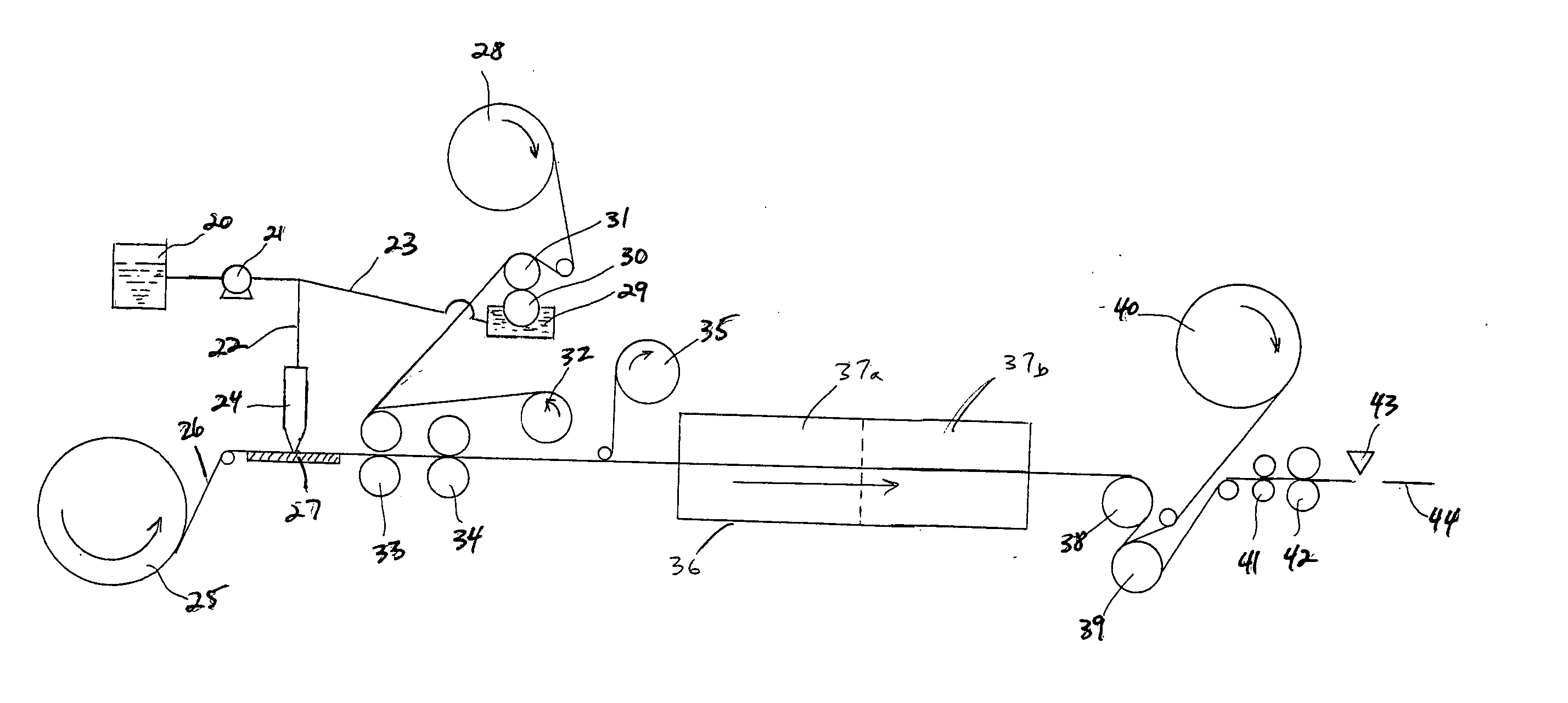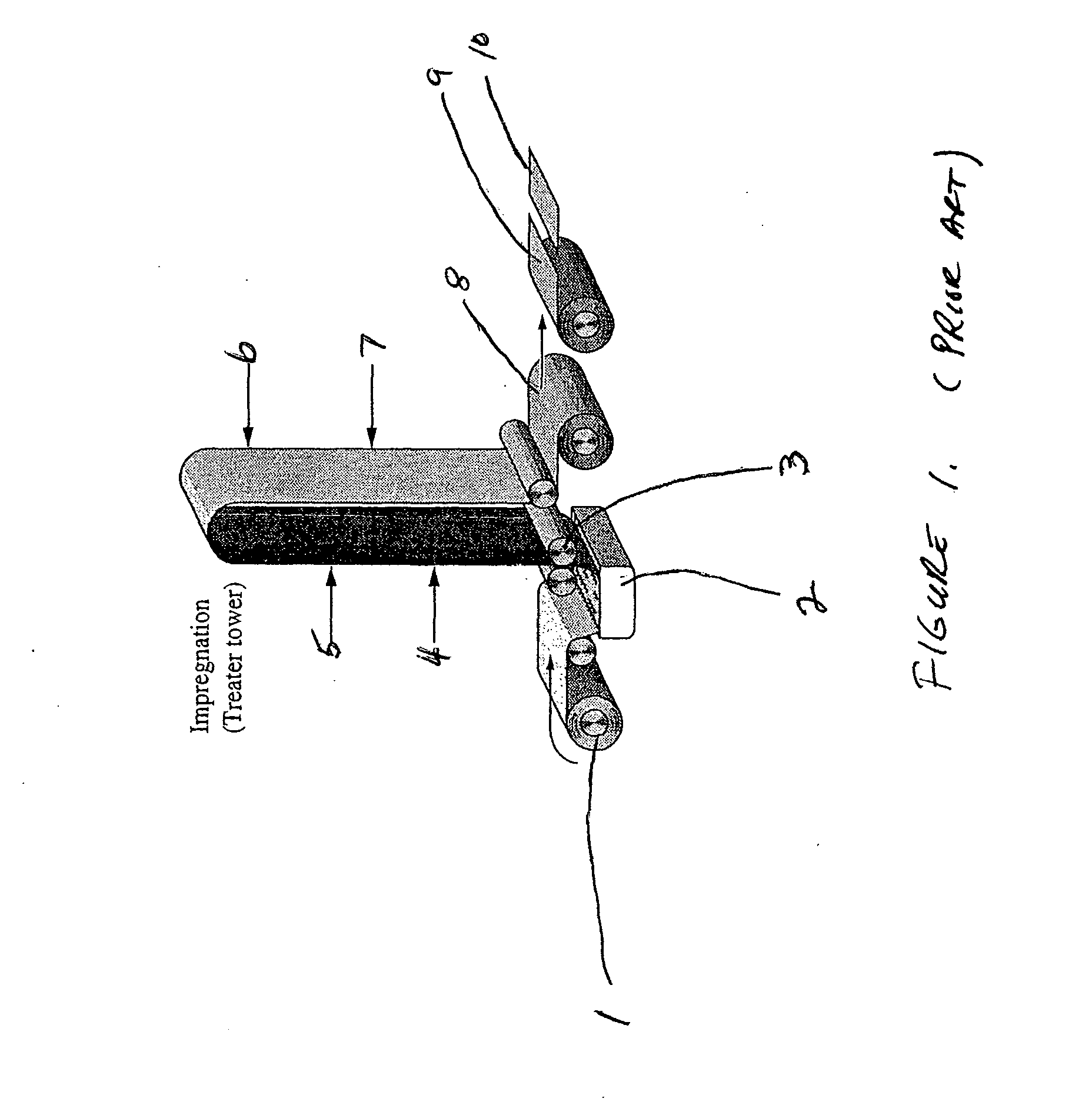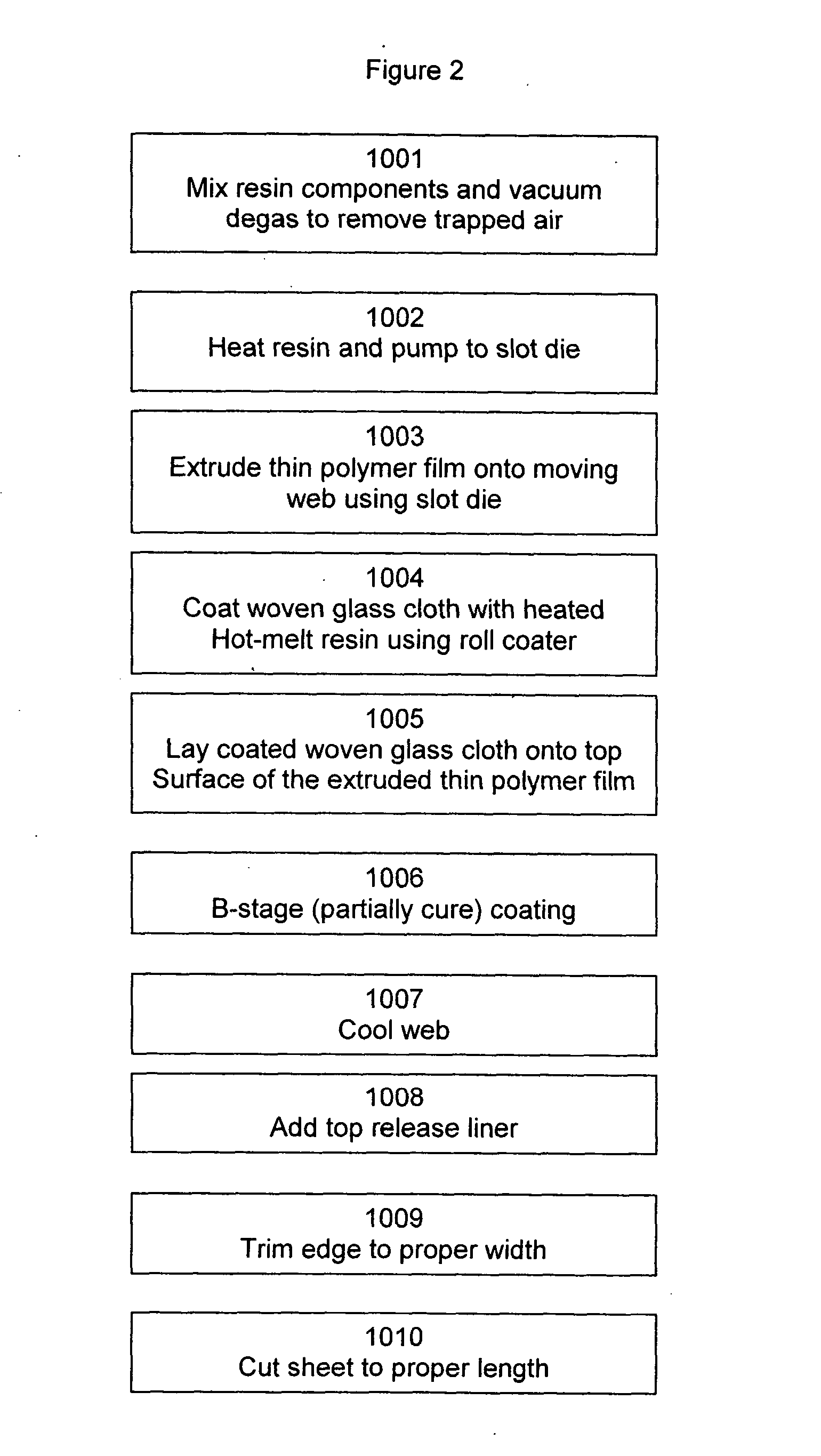Method for making a prepreg
a thermosetting polymer film and prepreg technology, applied in the direction of synthetic resin layered products, other domestic articles, coatings, etc., can solve the problems of solvent evaporation leading to voids in the prepreg, circuit board performance degradation, etc., to achieve optimum thermal and electrical properties, reduce the amount of woven glass, and reduce the effect of solvent evaporation
- Summary
- Abstract
- Description
- Claims
- Application Information
AI Technical Summary
Benefits of technology
Problems solved by technology
Method used
Image
Examples
Embodiment Construction
[0034] The invention is a method to produce a thermally enhanced film or thermally enhanced fiberglass reinforced prepregs. A prepreg is defined as a partially cured or B-staged resin impregnated into a reinforcement, typically but not limited to a woven glass cloth. Other reinforcements for prepregs include non-woven glass cloth and non-woven organic fibers such as Kevlar.
[0035] Referring to FIG. 3, the present invention uses a solventless hot melt resin system. The fully mixed resin melt is contained in a temperature controlled reservoir 20. The hot melt it pumped 21 into a temperature controlled transfer hose 22 to a heated slot die extrusion manifold 24. Additionally the hot melt is transferred to a glass cloth coating station through a temperature controlled transfer hose 23.
[0036] The process starts with a carrier film unwind station 25. The carrier film 26 can be coated kraft paper or a polymer film. For low temperature applications (process temperatures below 250° F.), a h...
PUM
| Property | Measurement | Unit |
|---|---|---|
| thickness | aaaaa | aaaaa |
| thickness | aaaaa | aaaaa |
| thickness | aaaaa | aaaaa |
Abstract
Description
Claims
Application Information
 Login to View More
Login to View More - R&D
- Intellectual Property
- Life Sciences
- Materials
- Tech Scout
- Unparalleled Data Quality
- Higher Quality Content
- 60% Fewer Hallucinations
Browse by: Latest US Patents, China's latest patents, Technical Efficacy Thesaurus, Application Domain, Technology Topic, Popular Technical Reports.
© 2025 PatSnap. All rights reserved.Legal|Privacy policy|Modern Slavery Act Transparency Statement|Sitemap|About US| Contact US: help@patsnap.com



